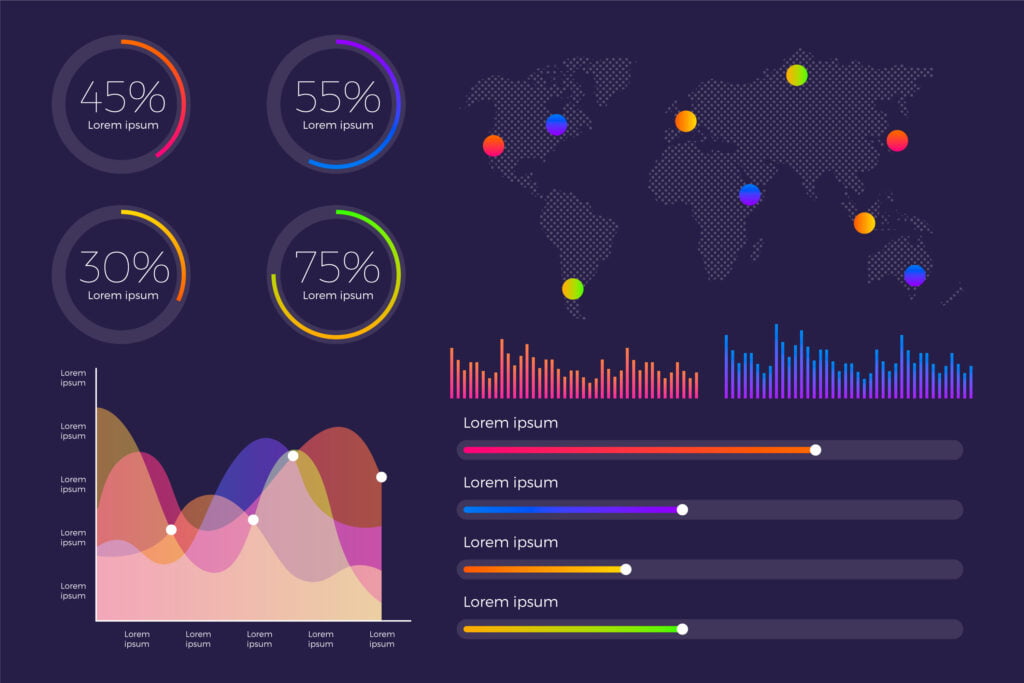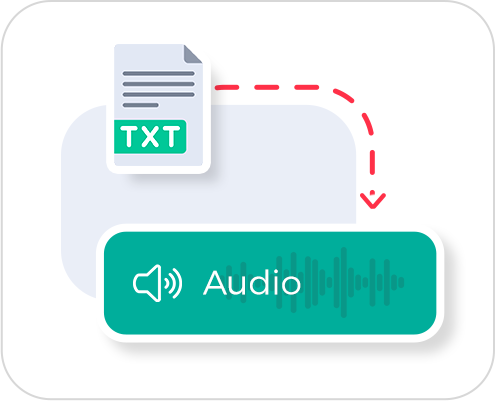Artificial Intelligence (AI) voice technology has come a long way these days. Technological innovations have allowed AI voice assistants, smart speakers, and other devices to now produce voices that sound extremely realistic and natural. In this blog, we will review the key features and products that provide you with the most realistic AI voice.
The main purpose of our review is to give you information on AI voice technologies and products that are at the top in terms of voice quality, customization, and ease of use.
Table of Contents
Toggle1. Voice Quality
The most important factor for any AI voice to sound real and natural is its voice quality. The most realistic AI voice is determined by how clear, balanced, and free of any electronic noise it is.
The voice should not contain any artificial elements, and it should be designed in such a way that the listener perceives it as a real person’s voice. Top most realistic AI voice products such as Google Duplex and Amazon Polly feature this feature prominently.

2. Naturalness and Human Tone
The naturalness of an AI voice refers to how natural and human-like the voice sounds. A realistic AI voice system should have the same tone and modulation of the voice as a real person’s voice.
For example, Google Assistant and Microsoft’s Azure AI use various accents and tonal modulations to make their voices sound natural. These AI voice models set the speed and pitch of the voice in such a way that it sounds real.
3. Customization Options
Customization options are provided to make AI voice technology more realistic and personal. This includes features to change the pitch, tone, and speed of the voice. In some AI voice solutions, users can adjust these parameters according to their preferences.
For example, Amazon Polly and IBM Watson Text to Speech allow users to add variety to the voice. Users can make the voice male or female, slow or fast, serious or enthusiastic. These customization features are very useful for businesses that want to make their customer experience more personal.

4. Language and Accent Support
The realism of an AI voice also depends on the languages and accents it supports. The most realistic AI voice products support multiple languages and different accents so that they sound believable to people from different regions.
Products like Microsoft Azure AI and Google Text-to-Speech offer multilingual support. These services support not only English but also other major languages like Hindi, French, Spanish, etc. Additionally, AI voices can also be customized in different local accents (e.g. British, American, Australian), making it more realistic.

5. Real-time Performance
When it comes to real-time performance, the most realistic AI voice technology is one that responds instantly. This feature is especially important for live chatbots, voice assistants, and customer support systems.
Services like Google Duplex and IBM Watson perform extremely fast and reliable in real-time. These systems not only recognize user inputs instantly but can also respond in a matter of seconds.

6. Emotion and Expression Support
The Most realistic AI voice technology is now incorporating emotions and expressions, making it sound more realistic. Google AI and Amazon Polly have the ability to express various emotions in voice such as excitement, sadness, or frustration.
This feature is especially important for use cases where human interaction needs to be made more effective, such as customer service, healthcare, or education.

7. Ease of Use
The best AI voice system is one that is designed to be simple and user-friendly. Voice systems that come with an intuitive user interface and easy-to-integrate APIs are considered more effective.
Platforms like Microsoft Azure AI and IBM Watson have simple interfaces for voice creation and use, which are suitable for both developers and general users. With the help of these platforms, users can easily create voices even without any technical knowledge.
8. Innovation and Technology Upgrades
AI voice technology is rapidly moving towards innovation and improvement. New updates and features are constantly being added, making these voices more natural and realistic. AI models like Google Duplex and Amazon Polly are constantly receiving upgrades, allowing them to support new languages, accents, and technical features.
It is important to see which AI voice technology keeps updating itself over time, so that users can take advantage of the latest features.

9. Pricing and Value
The pricing system of AI voice products and the services they provide is also important to evaluate. Many AI voice services come with free basic plans, while premium features adopt a subscription or pay-per-use model.
For example, both Amazon Polly and Google Cloud Text-to-Speech are available in a pay-per-use model, whereby users pay only for the services they use.
10. Business Usability
The business use of AI voice technology is proving to be very practical and beneficial in many areas. It is being widely used especially in industries like call centers and automated voice systems.
1. Call Centers
AI voice systems can handle customer calls automatically. The system not only responds faster but also sounds like real human conversation, improving the customer experience. It helps businesses save human resources and allows them to provide 24×7 service.
2. Automated Voice Systems
Many businesses are using most realistic AI voice technology to automate their customer service and interactions. These systems can seamlessly handle various processes without any human intervention, such as providing product information, taking orders, and answering common queries.

11. Variety of Use Cases
The use of AI voice technology is not limited to business sectors, but it is also being widely used in many other sectors. Here are a portion of the significant use cases:
1. Personal Assistants
Virtual assistants such as Google Assistant and Amazon Alexa in smartphones, smart speakers, and other devices use AI voice. These assistants help users answer questions, set reminders, and complete other tasks.
2. Entertainment
AI voice is now also being used in entertainment platforms such as video games, animation, and podcasting. This technology makes the voice of game characters or the voice of the narrator more real and engaging.
3. Education
The use of AI voice technology is increasing in the field of education, especially in online learning and educational apps. Lesson content is being made more interactive and accessible for children and students through most realistic AI voice.
From all of these use cases, it’s clear that AI voice technology can have wide and varied uses, improving both productivity and user experience across a variety of sectors.
Conclusion
In this blog, we reviewed the key features and products that provide you with the most realistic AI voice. Whether it is voice quality, customization options, or emotion support, considering all these aspects can help you choose the most realistic AI voice system as per your needs.
Innovations and improvements in AI voice technology are happening rapidly, and it is certain that these voices will become even more realistic and effective in the times to come.


FAQs
The most realistic AI voice is one that sounds natural, human-like, and clear. Products like Google Duplex, Amazon Polly, and Microsoft Azure AI are known for producing most realistic AI voices, with support for natural tones, emotions, and expressions.
AI voice technology uses advanced algorithms and deep learning models to generate speech from text or other inputs. These systems analyze the tone, pitch, and rhythm of human speech and mimic it to create realistic-sounding voices.
AI voice technology uses advanced algorithms and deep learning models to generate speech from text or other inputs. These systems analyze the tone, pitch, and rhythm of human speech and mimic it to create realistic-sounding voices.
AI voice solutions like Amazon Polly and IBM Watson Text to Speech offer extensive customization options, allowing users to adjust pitch, tone, speed, and even select different emotions for more personalized and realistic voices.
AI voice solutions like Amazon Polly and IBM Watson Text to Speech offer extensive customization options, allowing users to adjust pitch, tone, speed, and even select different emotions for more personalized and realistic voices.
Many AI voice platforms, such as Google Text-to-Speech and Microsoft Azure AI, support a wide range of languages including English, Spanish, Hindi, French, and others. They also offer multiple accents like British, American, and Australian English.
Yes, advanced AI voice technologies can convey emotions. Google AI and Amazon Polly, for example, have integrated features that allow voices to express emotions like excitement, sadness, or neutrality, making them more human-like
Yes, many AI voice systems are capable of real-time performance. Products like Google Duplex and IBM Watson offer real-time voice generation, which is essential for applications like voice assistants, chatbots, and customer service.
Leading AI voice providers typically prioritize data privacy and security. They implement encryption and data protection protocols to ensure that user data remains safe. However, it’s important to check each platform’s privacy policy for specific details
The cost of AI voice services varies by provider and usage. Some, like Google Text-to-Speech and Amazon Polly, use a pay-as-you-go model, charging based on the number of characters or hours of voice generated. Many platforms also offer free tiers for limited use.
AI voice systems improve through continuous innovation and technology upgrades. Providers like Google, Amazon, and Microsoft frequently update their platforms with better voice models, language support, and new features to enhance the realism and performance of their voices.
Yes, most AI voice technologies offer APIs and SDKs that allow easy integration with various platforms, such as mobile apps, websites, and virtual assistants like Alexa and Google Assistant.
Affiliate Disclaimer:
Some of the links in this blog post are affiliate links, which means I may earn a small commission if you make a purchase through these links at no additional cost to you. This helps support the content I provide. I only recommend products and services that I genuinely find valuable and believe will benefit my readers.





